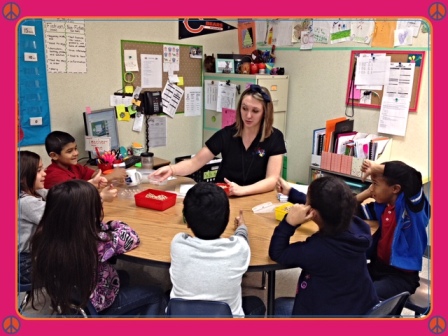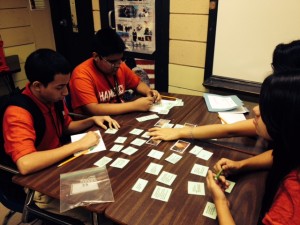“Teaching is a calling, too. And, I’ve always thought that teachers, in their way, are holy- angels leading their flocks out of the darkness.” -Jeannette Walls, Half Broken Horses
In September of 2013, I began to work with a team of teachers who were looking for a way to provide better math instruction to their students. The entire team from this school attended a Tabor Rotation Institute and then immediately began to implement the Tabor Rotation Framework into their classrooms. They each saw growth after just 3 weeks of using Tabor Rotation.
One of these teachers, Leah Beidelman, dedicated herself to doing everything she could to ensure that ALL of her students were meeting or exceeding their potential. Her results? At the beginning of the year approximately 50% of her students were passing. She ended the year with 92% passing!
Due to her incredible success and phenomenal attitude, I asked Ms. Beidelman to share the top three things she would recommend to teachers as they begin to implement the Tabor Rotation Framework.
Top 3 Things a Teacher Can Do to Make Tabor Rotation Successful
1. Invest time, at least 2-3 weeks, to just introduce the stations, the procedures, and the roles of the Tabor Rotation Framework to the students and help them better understand all of their responsibilities. [You can be teaching mathematical concepts while teaching the framework.] I found that the more time I put into setting up each aspect and reinforcing my expectations, the more smoothly the rotations ran once we had implemented the first 2 phases of the Tabor Rotation.
2. Hold yourself accountable for holding a Leadership Academy every Monday. I found that sometimes, I would be unmotivated to hold the Leadership Academy or we would need to use Mondays to catch up on unfinished work. When I began to consistently pull my Leaders and Co-leaders each Monday for Leadership Academy, my Teacher Time Station interruptions decreased dramatically! The students were able to complete the station rotations with a greater amount of independence.
3. Use points to motivate each of the teams. When I first began implementing the stations, I was not giving out points. I found it to be too overwhelming. After observing my students complete the stations for about a month, I realized that many of them were still not following the expectations I had set (not cleaning up on time, not working as a team, playing with the math tools). I decided to implement the points into our rotations. The first day I began points, the students were much more willing and motivated to follow the expectations that had been set.
There were more things that helped to make the Tabor Rotation successful in my classroom, but these were really the top three. I’m thrilled with the results my students achieved, but some of the transformation will not be documented on a state or district test. My students are understanding mathematical concepts at a much deeper level than ever before! After implementing the framework, I also began to observe conversations and behaviors from the students that can be hard to teach them (responsibility, problem solving, teamwork, personal accountability).
“Tabor Rotation has changed the lives of many and has helped me to dream even bigger dreams! It has helped make the impossible possible for me and my students!” -Leah Beidelman, Teacher Extraordinaire
“In large part, we are teachers precisely because we remember what it was like to be a student. Someone inspired us. Someone influenced us. Or someone hurt us. And we’ve channeled that joy (or pain) into our own unique philosophies on life and learning and we’re always looking for an opportunity to share them-with each other, our students, parents, or in our communities.” -Tucker Elliot




